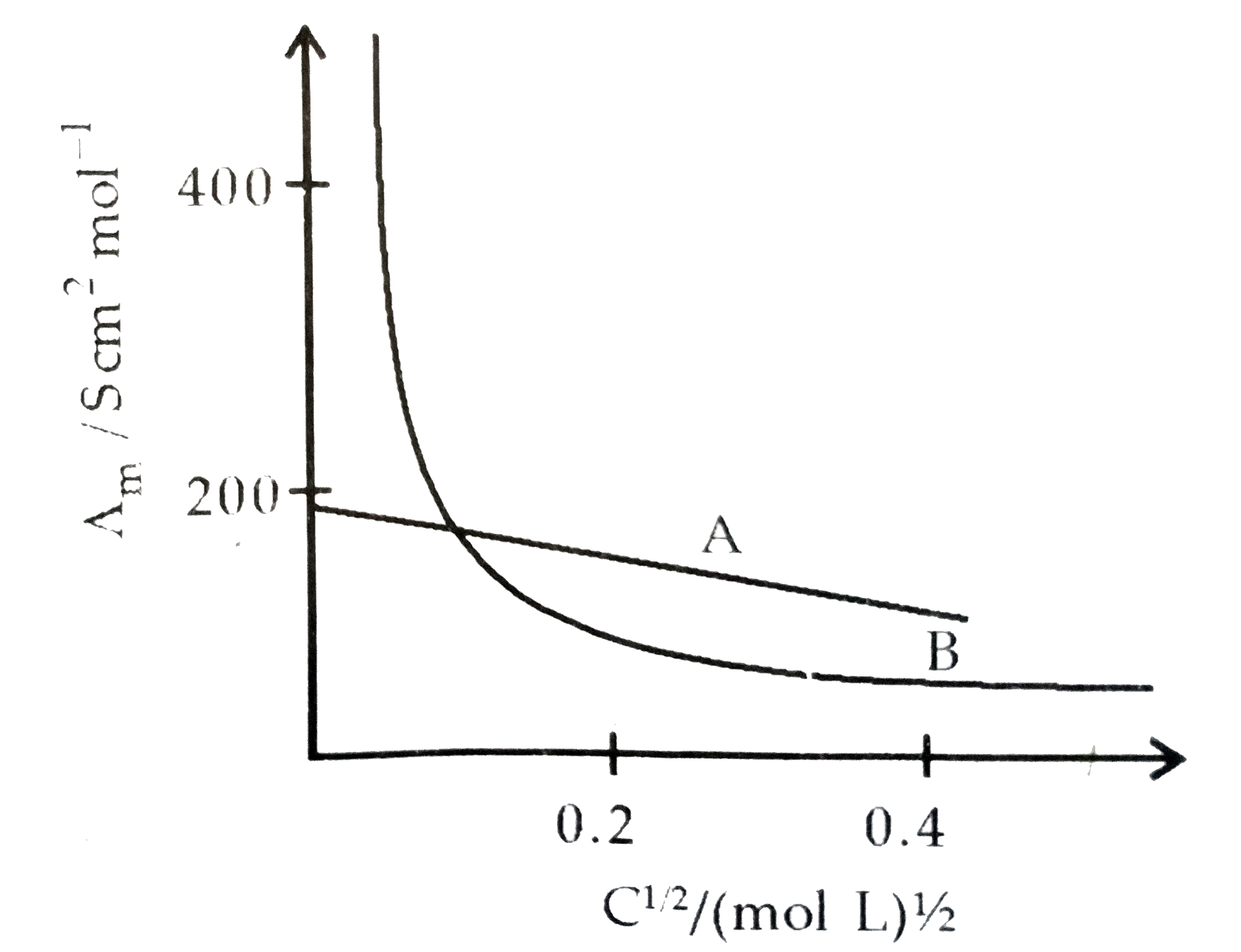The following curve is obtained when molar conductivity (∧m) is plotted against the square root of concentration, c1/2 for two electrolytes A and B
(a) How do you account for the increase in the molar conductivity of the electrolyte A on dilution.

(b) As seen from the graph, the value of limiting molar conductivity (∧0m) for electrolyte B cannot be obtained graphically. How can this value be obtained?1
Step by step video & image solution for The following curve is obtained when molar conductivity (wedge_(m)) is plotted against the square root of concentration, c^(1//2) for two electrolytes A and B (a) How do you account for the increase in the molar conductivity of the electrolyte A on dilution. (b) As seen from the graph, the value of limiting molar conductivity (wedge_(m)^(0)) for electrolyte B cannot be obtained graphically. How can this value be obtained?1 by Chemistry experts to help you in doubts & scoring excellent marks in Class 12 exams.
Updated on:21/07/2023Similar Questions
Knowledge Check
Limiting molar conductivity of NaBr is
AΛ∘mNaBr=Λ∘mNaCl+Λ∘mKBrBΛ∘mNaBr=Λ∘mNaCl+Λ∘mKBr−Λ∘mKClCΛ∘mNaBr=Λ∘mNaOH+Λ∘mNaBr−Λ∘mNaClDΛ∘mNaBr=Λ∘mNaCl−Λ∘mNaBr
The increase in equivalent conductivity of a weak electrolyte with dilution is due to :
View SolutionExplain with a graph the variation of molar conductivity of a strong electrolyte with dilution.
View SolutionResistivity is reciprocal of molar conductivity of electrolyte.
View SolutionThe molar conductivity of strong electrolyte
View SolutionHow is the unit of molar conductivity arrived ?
View SolutionHow does temperature affect the electrical conductivity of electrolytes ?
View SolutionWhat is the effect of decreasing concentration on the molar conductivity of a weak electrolyte?
View Solution
